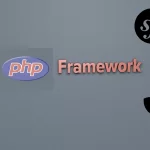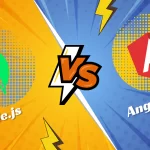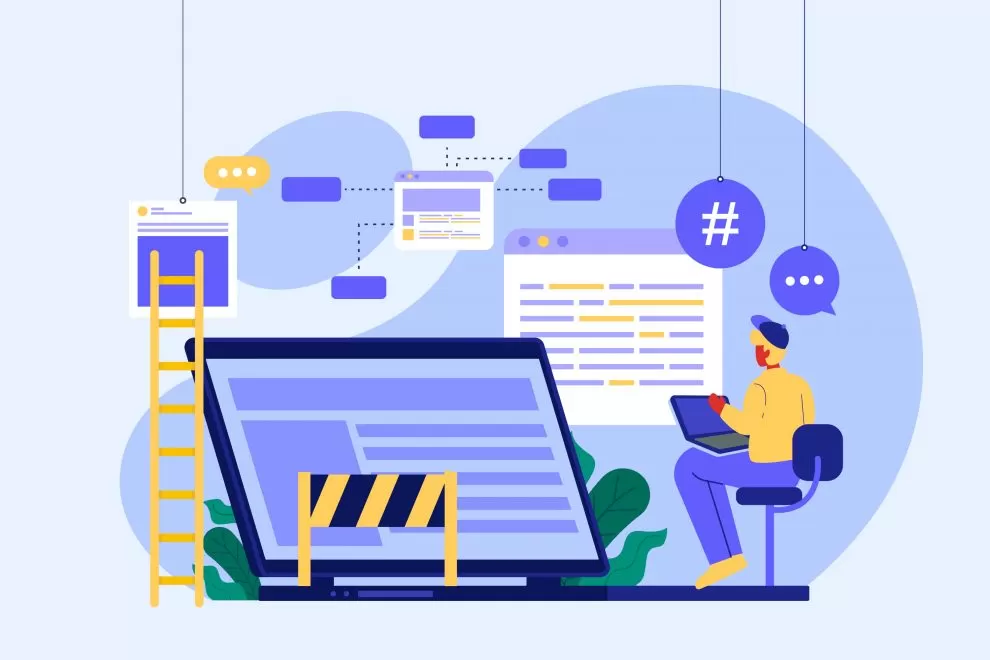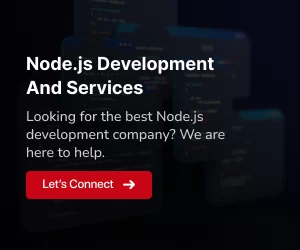The world of software development is continually evolving, and with each passing day, new methodologies and tools emerge to reshape the landscape. In this ever-changing environment, No-Code Backend Development has emerged as a game-changing paradigm, challenging the traditional notions of coding and development. The very essence of No-Code Backend Development lies in its ability to construct the backbone of web applications without the need for intricate lines of code. It is an innovative approach that simplifies the development process, offering accessibility to individuals with limited coding experience and accelerating the pace of application creation.
In this comprehensive exploration of No-Code Backend Development, we will unravel the intricacies of this revolutionary concept, offering a detailed understanding of its core principles, advantages, applications, limitations, and how it is transforming the way we create software. As we embark on this journey, we will delve into the heart of No-Code Backend Development, examine its key features, and explore its many use cases. We will also shed light on the potential constraints and challenges it may pose, offering a balanced view of its capabilities. This deep dive into No-Code Backend Development aims to provide you with the knowledge needed to understand, evaluate, and potentially embrace this transformative approach to software development. So, let’s begin our exploration of the fascinating world of No-Code Backend Development.
Also Read: Top 10 No-Code Backend Tools in 2023
Understanding No-Code Backend Development
No-Code Backend Development is an innovative approach that is redefining how we build the infrastructure of web applications. At its core, this concept revolves around simplifying the process of creating and managing the backend of applications without the necessity of traditional coding. It’s a paradigm that empowers a broader audience, allowing individuals with limited coding experience to participate in the development of powerful web applications.
The Central Idea
The fundamental premise of No-Code Backend Development is that it enables users to achieve complex backend functionality without getting entangled in the complexities of coding. Instead of writing lines of code, users work with user-friendly interfaces and pre-built modules to design and manage their backend systems. This approach democratizes backend development, making it accessible to a wide range of users, from entrepreneurs to small businesses.
Key Features in Detail
Drag-and-Drop Functionality:
No-Code platforms often feature a drag-and-drop interface that allows users to visually arrange and configure backend components. This eliminates the need for manually writing and debugging code.API Integration:
No-Code tools offer seamless integration with various APIs, making it effortless to connect an application to external services and data sources, expanding its functionality.Database Management:
Many No-Code solutions come equipped with built-in databases, streamlining data management and reducing the need for manual database setup and maintenance.Scalability:
No-Code Backend Development tools offer scalability options, ensuring that as your application grows, it can adapt to evolving requirements without significant redevelopment.- Real-time Collaboration: Collaboration features enable teams to work together in real-time on backend development, improving efficiency and fostering teamwork.
The Advantages It Offers
No-Code Backend Development provides several notable advantages:
Faster Development:
With pre-built components and an intuitive interface, development cycles are significantly shorter, enabling quicker time-to-market for your applications.Accessibility:
No-Code tools open up backend development to a wider audience, empowering those with limited coding skills to create powerful applications that would have been challenging to build traditionally.Cost-Efficiency:
Reduced development time translates to lower development costs, making it an appealing option for startups and small businesses with budget constraints.Flexibility:
No-Code solutions offer flexibility, allowing developers to customize their applications to meet specific needs while still benefiting from the speed and ease of no-code development.Rapid Prototyping:
No-Code Backend Development is an excellent choice for prototyping and quickly testing ideas, facilitating the validation of concepts without investing heavily in development.
As we delve deeper into the realm of No-Code Backend Development, we will explore how this innovative approach operates, its use cases in various application domains, the potential limitations and challenges it poses, and a step-by-step guide on how to get started with No-Code Backend Development. So, stay with us as we unravel the exciting world of backend development without the need for extensive coding knowledge.
How Does No-Code Backend Development Work?
No-Code Backend Development platforms operate on a set of foundational principles that make them accessible and functional for a broad user base. Understanding these principles is crucial for grasping how this innovative approach to backend development functions.
Visual Interface:
No-Code platforms provide a visual interface that simplifies the backend development process. Users interact with this interface to select, customize, and interconnect various backend components. Instead of writing code, they manipulate these components visually, arranging them to suit the application’s needs.Component Library:
One of the cornerstones of No-Code Backend Development is the availability of a library of pre-constructed backend elements. These elements include features like user authentication, databases, API integrations, and more. Users can choose from this library of building blocks and incorporate them into their projects. This eliminates the need to create these components from scratch, saving both time and effort.Workflow Logic:
No-Code platforms offer a way to define the logic of an application’s backend through visual and interactive workflows. Users can establish the rules and conditions that govern how their application functions. This workflow logic enables them to specify how data moves, how processes are automated, and how various components interact with each other. It’s a critical aspect that empowers users to create complex backend functionality without writing code.
By harnessing these principles, No-Code Backend Development platforms enable users to construct robust backend systems with ease, all without the need for extensive coding knowledge or experience. These platforms offer a visual, intuitive, and user-friendly way to develop the backend of web applications, democratizing access to this critical aspect of software development.
Also Read: Node.js vs .NET Core: Choosing the Right Backend
The Use Cases of No-Code Backend Development
No-Code Backend Development has broad applications in various domains, making it a versatile solution for a wide range of projects. Let’s explore some of the primary use cases where this innovative approach shines:
E-Commerce Platforms – {Online Stores}:
No-Code Backend Development is ideal for building e-commerce websites. It can handle essential features like product listings, shopping carts, and payment processing, making it easier for businesses to launch and manage online stores.Content Management Systems (CMS) – {Blogs and Websites}:
Creating content-rich websites and blogs is a breeze with No-Code tools. You can manage and update content, handle user authentication, and incorporate dynamic elements seamlessly.Mobile Applications – {Mobile App Backends}:
Developing mobile applications often requires a robust server-side component. No-Code Backend Development simplifies the creation of user profiles, data storage, and other essential features needed for mobile apps.Software as a Service (SaaS) Products – {SaaS Solutions}:
No-Code Backend Development is valuable for building SaaS products with complex backend systems. It enables the management of user accounts, data storage, and integrations with external services, all while reducing development time.Internal Tools- {Custom Business Applications}:
Businesses can use No-Code Backend Development to create custom applications for internal use. These tools can streamline operations, automate tasks, and enhance efficiency without the need for extensive coding expertise.Startup Projects – {Minimum Viable Products (MVPs)}:
No-Code Backend Development is an excellent choice for startups looking to develop MVPs quickly and cost-effectively. It allows them to test their business ideas and validate market demand without significant development overhead.Education and Learning Platforms – {Online Courses and Learning Management Systems}:
Educational institutions and individuals can leverage No-Code Backend Development to build online learning platforms, manage user profiles, and deliver content to students.Non-Profit and Community Projects – {Community Portals}:
No-Code tools can facilitate the creation of community-based websites or portals, helping non-profit organizations and community groups connect with their members and provide valuable services.Proof of Concepts – {Idea Testing}:
No-Code platforms are valuable for rapidly testing new ideas. You can create prototypes and proof of concepts without dedicating extensive resources to development.Rapid Prototyping – {Experimental Projects}:
Whether you’re a solo developer or part of a team, No-Code Backend Development offers a fast and efficient way to prototype experimental projects, explore new features, and validate concepts.
These use cases demonstrate the versatility of No-Code Backend in both commercial and non-commercial settings. Its ability to streamline backend development processes while maintaining flexibility and customization options makes it an attractive choice for a wide array of projects.
Limitations
Complexity Threshold:
Limitation:
No-Code platforms may struggle with extremely complex or highly specialized applications.Consideration:
Evaluate the complexity of your project and determine if it aligns with the platform’s capabilities. Custom coding might be more appropriate for projects with intricate, specialized requirements.
Scalability Concerns:
Limitation
: Some No-Code platforms may have scalability limitations.Consideration
: Assess whether the No-Code platform can handle the anticipated growth of your application. If significant scalability is required, consider custom coding as an alternative.
Dependency on the Provider:
Limitation:
No-Code platforms depend on the provider’s features and updates.Consideration:
Understand the level of control you have over your application and be aware of the platform provider’s terms and commitment to long-term support. Plan for potential updates and changes.
Learning Curve:
Consideration:
No-Code Backend Development platforms have a learning curve. Dedicate time to understand the platform’s features, best practices, and workflow logic to harness its full potential effectively.
Customization Constraints:
Consideration:
While No-Code tools offer customization, they have limits. Evaluate if the platform’s customization matches your project’s needs and the level of uniqueness you seek.
Data Security and Compliance:
Consideration:
Assess data security and compliance in your chosen No-Code platform, ensuring they meet necessary standards, crucial for handling sensitive data.
Community and Support:
Consideration:
Investigate the level of community support and documentation available for your chosen No-Code platform. A strong community and good support can be invaluable for resolving issues and gaining proficiency with the platform.
Conclusion
To conclude, No-Code Backend simplifies web app creation without traditional coding. It offers benefits but has limitations.
Primarily, understanding your project’s complexity and alignment with the platform is paramount for success. If your project demands intricate and specialized functionalities, custom coding might emerge as a more suitable alternative. Additionally, evaluating scalability concerns is essential to ensure the chosen No-Code platform can accommodate your application’s anticipated growth.
Consider customization limitations and vendor lock-in. Include ongoing costs in project budget planning and decision-making.
Being conscious of these limits enables informed choices, overcoming challenges, and harnessing No-Code Backend Development’s potential. This, in turn, enables the creation of efficient and powerful web applications that align seamlessly with your specific project requirements.















